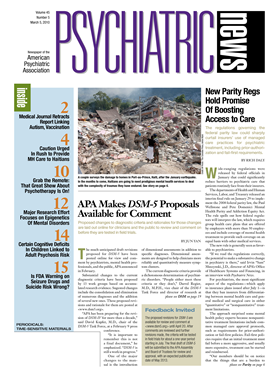Accommodation for mentally ill people was quite limited in 19th-century England. Bethlem Hospital (Bedlam) had been founded in 1247 by a religious order to provide care for the poor, and by 1400 it was admitting “lunatics.” (Mentally ill people were not called “patients” until 1700.)
Mentally ill people were usually cared for by their families or left to wander the countryside. If aggressive or troublesome, they were placed in almshouses or correctional facilities. The need to provide for those who had funds to pay for care led to the establishment of privately owned houses on a for-profit basis. Helkiah Crooke, the first physician at Bethlem and, in 1632, its first physician-governor, was known to have several lunatics in his home. This practice became known later as the “trade in lunacy.”
More than 200 such houses existed in England varying in size from a few patients to several hundred. The houses were run by physicians or nonphysicians who employed a consultant physician or apothecary to treat the patients. Conditions within the houses varied tremendously. The York Retreat, founded by Quakers in 1792, provided an example of a benevolent, empathic environment and treatment approach known as moral treatment.
Conditions in the “madhouses,” especially for paupers, came to public attention over the years and led Parliament to eventually pass laws regarding them. A 1774 law required that private madhouses in London be inspected and licensed by commissioners appointed by the College of Physicians. Elsewhere they had to be inspected by justices of the peace.
In 1808, the government authorized the establishment of county asylums, and in 1845 their establishment became a mandate. The Lunacy Act of 1890 restricted expansion of private asylums in England.
In America, hospitals and asylums had a different history. Early on they were all nonprofit, funded by private donors or a combination of private and public funds. Some were founded by religious orders, and all were headed by physicians.
As in England, mentally ill people were usually cared for by their relatives, or if aggressive or dangerous, they were confined in jails or almshouses. In 1752 the Pennsylvania Hospital in Philadelphia was established with Quaker influence, and its basement was used to house mentally ill people, who were often chained. In 1792 the New York Hospital opened and also provided limited housing for mentally ill people. A separate facility was later built and became the Bloomingdale Hospital.
The Quakers in Philadelphia established an asylum in Frankford, Pa., and in 1817, the Massachusetts General Hospital in Boston opened a separate facility known as McLean Hospital. The Hartford Retreat opened in 1824 in Connecticut, and in 1847, a religious order established Mt. Hope Retreat in Baltimore.
The establishment of the private hospitals was soon overtaken by a trend to build state mental hospitals, which served both those able and unable to pay. Virginia opened America's first public hospital in Williamsburg in 1773 and a second in Staunton in 1828. State asylums opened in Kentucky in 1824, South Carolina in 1828, and Massachusetts in 1833.
In the 19th century, every state opened at least one public mental hospital. Wisconsin and New Jersey also chose to open county asylums.
Despite the growing number of state hospitals established during the 19th century, mentally ill people were still confined under poor conditions in almshouses or jails as Dorothea Dix was to discover in her travels in several states during the middle 1800s. Her communications with state legislators describing the conditions she witnessed provided an incentive for state officials to open additional state hospitals, and mental hospitals began to be regularly inspected by state agencies or charity board members.
Legislation covering the civil rights of mentally ill patients was a state responsibility, as were involuntary-commitment laws. Many of the laws regarding treatment in the 19th century were based on Isaac Ray's “Treatise on the Medical Jurisprudence of Insanity,” published in 1838, and his “Project of a Law Determining the Legal Relations of the Insane,” published in 1850.
By the mid 20th century, the development of psychiatric medications, use of psychotherapeutic approaches to treatment, and changed social expectations regarding psychiatric patients impacted the way patients were treated in psychiatric hospitals and eventually led to the deinstitutionalization movement. That was followed by a growing interest in a community-psychiatry approach in the United States and England, which ushered in a new age, and new challenges because of underfunding, for the care and treatment of people with mental illness.

